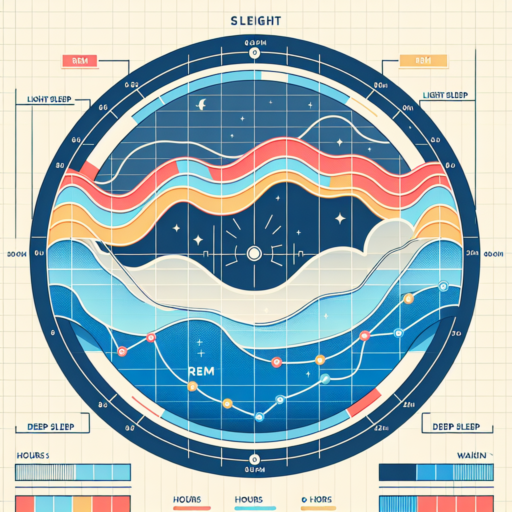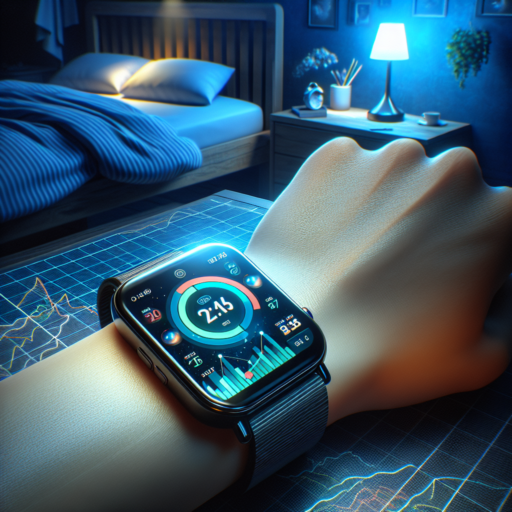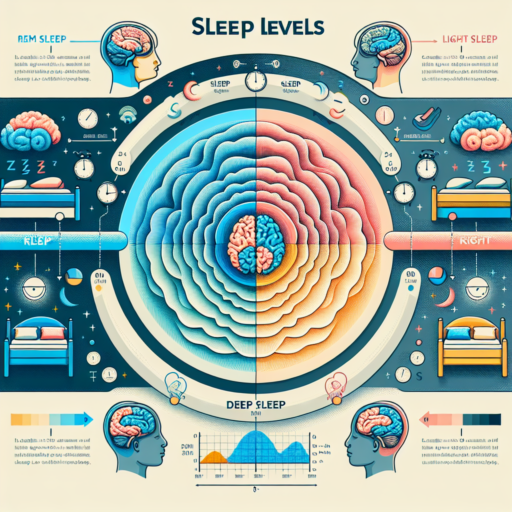No se han encontrado productos.
Understanding the Importance of Monitoring Your Sleep
Monitoring your sleep patterns is an essential aspect of maintaining overall wellness and health. In today’s fast-paced world, sleep often takes a backseat to our busy schedules, leading to a widespread neglect of this vital component of our health regime. Understanding the importance of tracking your sleep can open the door to substantial improvements in both physical and mental health.
Enhancing Sleep Quality
One of the primary reasons to monitor sleep is to enhance the quality of rest you get each night. By keeping track of sleep duration, cycles, and disturbances, individuals can identify patterns or behaviors that may be affecting their sleep negatively. This insight allows for targeted changes, such as adjusting room temperature or reducing screen time before bed, which can lead to more restorative sleep and elevated daily functioning.
Identifying Potential Sleep Disorders
Regular sleep monitoring is a critical tool in identifying symptoms of potential sleep disorders early on. Conditions like sleep apnea, insomnia, and restless leg syndrome are remarkably common, yet often go undiagnosed due to a lack of awareness and monitoring. Recognizing irregular sleep patterns can prompt a professional consultation, leading to early intervention and treatment. This proactive approach is vital in preventing the long-term health issues associated with untreated sleep disorders.
In summary, the act of monitoring sleep is a profound step toward enhancing the quality of life. Through a clearer understanding of sleep patterns and behaviors, individuals can make informed decisions about their health and well-being. This process not only contributes to better sleep but also plays a significant role in overall health maintenance and disease prevention.
Top Tools and Devices for Sleep Monitoring in 2023
In the world of health and wellness, understanding and improving sleep quality has become a paramount concern for many. As we step into 2023, the market is brimming with innovative tools and devices designed to monitor sleep with precision and ease. Among these, certain standout products have captured the attention of both consumers and health professionals alike, offering insights that were once only attainable through clinical studies.
Wearable Sleep Trackers
Wearable technology has made significant strides in monitoring sleep patterns. Devices such as Fitbit Sense and the Garmin Vivosmart 4 not only track your sleep stages—light, deep, and REM cycles—but also provide invaluable feedback on blood oxygen levels and respiration. The seamless integration with smartphones allows users to review their nightly data and recognize patterns over time, offering a comprehensive look into their sleep health.
Smart Mattresses and Pillows
Moving beyond wearables, smart home devices like the Sleep Number Smart Bed and the Zeeq Smart Pillow are revolutionizing sleep monitoring from the comfort of one’s bed. These devices leverage advanced sensors to measure heart rate, respiration, and even body movement throughout the night. With the addition of customizing sleeping conditions—adjusting mattress firmness or pillow vibration for snoring solutions—they tailor the sleeping experience to individual needs, promoting a deeper and more restorative sleep.
The evolution of sleep technology in 2023 offers a promising avenue for enhancing the quality of our rest. The integration of advanced analytics and personalization in tools and devices not only makes sleep monitoring accessible but also paves the way for targeted improvements in our sleep patterns. As we continue to navigate the complexities of modern lifestyles, these innovations provide a beacon for achieving better sleep health.
How to Use a Sleep Tracker: A Step-by-Step Guide
Understanding the intricacies of a sleep tracker can transform your nightly rest patterns and boost your overall well-being. By tracking your sleep, you obtain valuable insights into your sleep quality, duration, and sleep cycles. This step-by-step guide aims to simplify the process, enabling you to leverage the most out of your device.
Step 1: Choosing the Right Sleep Tracker
The first step in using a sleep tracker effectively is selecting the device that best suits your needs. There are various types available, including wearables like wristbands and smartwatches, and non-wearable options such as under-mattress sensors or bedside devices. Assess your comfort level, budget, and what metrics you’d like to track before making a decision. Features to consider might include heart rate monitoring, breathing patterns, and sleep movement detection.
Step 2: Setting It Up Properly
Once you’ve chosen your sleep tracker, ensure it’s set up correctly. For wearable devices, this might mean wearing it snugly on your wrist throughout the night. For non-wearables, position the sensor or device as recommended by the manufacturer. Then, sync the device with its accompanying smartphone app or your home network. This connectivity is crucial for accessing and interpreting your sleep data.
Step 3: Interpreting the Data
After your first night’s sleep, it’s time to dive into the data. Most sleep trackers will provide a detailed analysis of your sleep stages—light, deep, and REM sleep. Look for patterns in your sleep behavior, such as what time you tend to fall asleep and wake up, how long it takes you to fall asleep, and any disturbances you experience during the night. Understanding these patterns can help you identify areas for improvement in your sleep habits.
Remember, consistent use is key to gaining accurate insights from your sleep tracker. Make it part of your nightly routine, and soon you’ll be well on your way to better sleep and improved health outcomes.
The Role of Smartphones in Sleep Tracking: Apps and Features
In the realm of digital health and wellness, smartphones have carved out a significant niche, particularly in the domain of sleep tracking. With a plethora of applications available at the touch of a screen, it’s easier than ever to analyze sleep patterns and habits. Sleep tracking apps leverage a variety of features to monitor the quality and duration of your sleep, employing sensors inherent to smartphones to provide users with comprehensive insights into their nocturnal cycles.
One of the key aspects of smartphone-based sleep tracking is the utilization of motion detection technologies, such as accelerometers, which can monitor and interpret user’s movements during sleep. This data is then analyzed to determine the sleep stages, from light to deep sleep, offering a glimpse into sleep quality and identifying potential disturbances. Additionally, sound analysis is another feature wherein the microphone picks up audio cues like snoring or sleep talking, further enriching the sleep data collected.
Apart from the direct tracking features, these apps often come equipped with tools designed to enhance sleep quality. Features such as smart alarms that wake you up at the most optimal time in your sleep cycle, and blue light filters that adjust your screen’s color temperature to reduce eye strain and prevent sleep disruption, support a more restful night’s sleep. Furthermore, integration with other health apps and devices allows for a holistic view of one’s wellness, showing how sleep interlinks with other facets of health.
Analyzing Sleep Data: What Your Sleep Patterns Tell You
Understanding your sleep patterns is crucial for improving your overall well-being. With the advent of wearable technology, analyzing sleep data has become more accessible than ever. This data, often detailed in various stages such as light, deep, and REM sleep, offers invaluable insights into your health and lifestyle. But, what exactly can your sleep patterns tell you?
Identifying Sleep Irregularities: One of the key benefits of scrutinizing your sleep data is the identification of any irregularities such as frequent awakenings or short sleep durations. These patterns can be indicative of underlying issues such as sleep apnea, insomnia, or even stress. By having a clearer picture of your sleep cycle, you can take proactive measures to address these concerns, often improving not just sleep quality but overall health.
Optimizing Sleep Efficiency: Analyzing your sleep patterns doesn’t just highlight problems; it can also help you understand how to optimize your sleep for better health. For instance, you may notice that you sleep deeply after engaging in certain activities or avoiding caffeine before bedtime. This kind of data allows you to adjust your pre-sleep routine to maximize the quality of rest you receive each night.
Furthermore, understanding your sleep stages and their durations can also lead to improved mental and emotional health. Deep sleep, for instance, is crucial for physical recovery and memory consolidation. Hence, by adjusting factors within your control, you can potentially enhance these restorative sleep stages, leading to better daily functioning and mood stability.
Improving Sleep Quality: Tips and Tricks Based on Your Sleep Data
Improving your sleep quality can drastically enhance your daily life, energy levels, and overall health. By closely examining and understanding your sleep data, you can implement targeted strategies to ensure you’re getting the best rest possible. Whether it’s adjusting your bedtime routine or changing environmental factors, you’ll discover personalized tips and tricks to help boost your sleep quality.
Analyze Your Sleep Patterns
Begin by meticulously analyzing your sleep data, usually collected via smartwatches or sleep tracking apps. Look for patterns such as the times you go to bed and wake up, how long it takes you to fall asleep, and any interruptions during the night. This information pinpoints areas for improvement, such as establishing a more consistent sleep schedule or identifying disturbances that prevent deep sleep phases.
Adjust Your Sleep Environment
Enhancing your sleep environment can have a significant impact on your sleep quality. Consider factors like room temperature, which should ideally be cool, and minimize noise and light pollution by using blackout curtains and white noise machines if necessary. Assessing your sleep data might reveal adjustments you can make to your environment to promote a more restful night’s sleep.
Incorporate Relaxation Techniques
Integrating relaxation techniques into your bedtime routine can greatly improve your ability to fall and stay asleep. Practices such as meditation, deep breathing exercises, and gentle yoga stretches encourage your body to enter a state of relaxation. Tailoring these techniques to your needs, based on what your sleep data suggests about your trouble areas, can expedite the improvement of your sleep quality.
Common Mistakes in Monitoring Sleep and How to Avoid Them
Monitoring sleep is essential for understanding and improving sleep quality, but it’s often not as straightforward as it sounds. Numerous individuals fall into common pitfalls that can skew their perception of their sleep health and lead to frustration. Recognizing and addressing these mistakes is crucial for gaining accurate insights into your sleep patterns.
Ignoring Sleep Quality
One significant mistake is focusing solely on sleep quantity while ignoring sleep quality. Many people assume that if they achieve a certain number of hours of sleep, they are well-rested. However, the quality of sleep — characterized by uninterrupted, deep sleep cycles — is equally important. To avoid this mistake, consider using a sleep tracker that monitors sleep stages and wakefulness, and not just the duration of sleep. Paying attention to how well you sleep instead of how long can offer more meaningful insights into your sleep health.
Not Considering Environmental Factors
Another common oversight is the failure to consider environmental factors that can significantly impact sleep quality. Factors such as noise levels, room temperature, and lighting can all influence your ability to fall asleep and stay asleep. To mitigate this mistake, make an effort to create a sleep-friendly environment: ensure your room is quiet, maintain a comfortable temperature, and minimize exposure to light before bedtime. By controlling these variables, you can improve both your sleep environment and the quality of your rest.
Relying Too Much on Technology
While sleep tracking technology can provide valuable insights, over-reliance on gadgets can ironically become a pitfall. Some individuals become so focused on the data generated by sleep trackers that they ignore their bodies’ natural sleep cues and signals. It’s imperative to remember that technology should supplement, not replace, your body’s natural sleep instincts. Striking a balance between using technology wisely and listening to your body is key to avoiding this common mistake in monitoring sleep.
Expert Opinions: What Healthcare Professionals Say About Sleep Tracking
Sleep tracking has garnered a lot of attention in the health and wellness community. Healthcare professionals, including doctors, sleep scientists, and wellness experts, have shared varied views on the utility of monitoring sleep patterns. According to some experts, sleep tracking can offer invaluable insights into the quality and quantity of an individual’s sleep. They argue that such data can help in identifying sleep disorders such as insomnia or sleep apnea early on, potentially leading to more effective treatments.
However, other healthcare professionals raise concerns about the accuracy of sleep tracking devices. They caution that not all devices may provide accurate data, which can sometimes lead to misinterpretation of sleep quality and quantity. This misinterpretation could potentially cause unnecessary anxiety among users who might think they are not getting enough restorative sleep, even when they are.
Furthermore, some experts emphasize the importance of how the data is used. They suggest that integrating sleep tracking into a comprehensive health assessment is key. By looking at the bigger picture, including diet, physical activity, and mental health, professionals can better understand an individual’s overall wellbeing. They argue that sleep tracking should not be viewed in isolation but as part of a holistic approach to health.
How to Choose the Best Sleep Monitoring Device for Your Needs
Choosing the best sleep monitoring device can seem overwhelming with the multitude of options available. It’s essential to consider what features are most important for your personal sleep health journey. Whether you’re looking for detailed analysis on sleep stages, insight into sleep apnea, or simply wish to improve your overall sleep quality, the key is to know what to look for.
Identify Your Sleep Goals: Before diving into the search for a sleep monitor, it’s crucial to identify what you hope to achieve with its use. Are you looking to track your REM cycles, understand your sleep patterns, or find ways to enhance your sleep quality? Knowing your goals will help narrow down the options and find a device that caters specifically to your needs.
Consider the Type of Device: Sleep monitors come in various forms – from wearable gadgets like wristbands and watches to non-wearable devices such as mattress pads and bedside monitors. Wearables are great for tracking your sleep stages, heart rate, and sometimes even snoring, while non-wearables can offer a less intrusive way to monitor sleep without having to wear anything. Evaluate which type of device would be more comfortable and practical for your lifestyle.
Look for Essential Features: Regardless of your sleep goals, some key features might be particularly beneficial. These include accuracy in tracking, battery life, comfort, and the ease with which you can access and understand the data collected. Also, consider whether you want a device that integrates with other health monitoring systems you might be using. This integration can provide a more holistic view of your health beyond just sleep.
Frequently Asked Questions About Sleep Monitoring
When it comes to understanding and improving the quality of your sleep, sleep monitoring is a technology that has gained significant attention. With a plethora of devices and apps available, it’s natural to have questions about how they work and the benefits they can offer. Here, we dive into some of the most commonly asked questions to shed light on this intriguing topic.
How Accurate Are Sleep Monitors?
Sleep monitors use various technologies to track different stages of sleep, including light, deep, and REM sleep. While most devices offer a good overview of your sleep patterns, their accuracy can vary. It’s important to research specific products and read user reviews to understand how well they perform in real-world settings. Studies suggest that devices using heart rate and movement sensors tend to provide more reliable data.
Can Sleep Monitoring Improve Sleep Quality?
Identifying patterns in your sleep can be the first step toward improving sleep quality. For instance, you may discover that you tend to sleep poorly on nights when you exercise late in the day. With this insight, you can adjust your routine to enhance sleep quality. Additionally, many sleep monitors offer customized tips and guidance based on your sleeping patterns, further assisting in improving your sleep health.




